- Super-Ranging: Ranging behaviour in badgers isn’t always black and white! - 15/02/2018
- Badgery Fieldwork - 22/02/2015
One of the best things about my PhD has got to be the fieldwork. My project involves analysing the GPS data of a population of badgers to find out where they forage, how big their territories are, who lives with whom and how they disperse. This means putting GPS collars on them twice a year. Badgers have a bit of a bad rep, one they really don’t deserve. Contrary to popular opinion they are not vicious beasts that, once clamped on to your foot, won’t let go until they hear the bones crack (people say this to me a lot). They are in fact quite timid and very cute with it!
I work with the NPWS and DAFM vets to trap and process the badgers. We set cages baited with yummy peanuts each night close to sett entrances and near regularly used latrines. Very early the next morning we go and check our haul. I love the anticipation of approaching the cage to see if we have a badger and who it might be. Each badger has its own distinct personality. Kenny will invariably be feigning sleep. Muffin huffs, puffs and chuffs a bit. Billy (RIP L) loved his peanuts and could be counted on to be in a trap most mornings, whereas Louis has proved to be a bit of an escape artist. Boru is the most chilled-out dude and saunters rather than runs out of the cage when we release him. We approach quietly because whether a badger is quiet or growling, it is afraid (except maybe Boru), and we want to minimise their stress as much as possible. Invariably even the feistiest badger shuts-down and plays dead, either covering its eyes with its forepaws or tucking its head under its belly. It’s just like kids thinking that if they can see you, you can’t see them. So cute! But every now and then a tremor of fear passes through their bodies. So quietly does it.
Teresa, my vet colleague, goes in to anaesthetise the badger so we can fit the collar and do all the other bits and piece we need to do. When first caught a badger gets weighed, has blood samples and pharyngeal swabs to test for TB, is given a BCG vaccine to provide immunity and/or mitigate against TB infection and is given a general health check. We take a tissue sample for genetic analysis. We take photos of the teeth to estimate age. We check general body condition, remove fleas, treat any wounds and give antibiotics if necessary. New individuals get a microchip (and a nickname!) so we can ID it in future and I tattoo the last four digits of this number on its belly – which is a pretty awesome job. I’m a badger tattoo artist! The tattoo allows anyone else who should come across the animals (usually after a road traffic accident) know that the badger is special, and we can hopefully have it tested for TB status post-mortem. Finally the collar is fitted and the badger is placed in a “recovery box” to which allows it to come around in peace and return to the sett in its own time. If it’s a retrap with a good collar, we simply let the badger go. That night the collar begins transmitting the badger’s position, allowing us to build a picture of its movement patterns in fantastic detail. I now have over 50,000 GPS data points available for further analysis (but that’s a whole other blog post/dissertation).
Fieldwork also involves retrieving lost collars which can be tedious, locating dead badgers which is sad (it is hard not to get attached to your research subjects), checking fields for foraging signs and looking for new setts & latrines which is always enjoyable. I never thought I’d be so excited about faeces…I’ve had to stop sharing photos on Facebook or risk being defriended.
Badgers really are beautiful animals – they have a distinct “badgery” smell, wonderfully powerful forelimbs with massive claws for digging setts and rooting for food. Their distinctive facial mask is thought to have evolved as warning colouration to would-be predators (although there are no natural predators in Ireland, bar man). Their bodies are low-slung but they can move with incredible speed when they want to. Being nocturnal and living in underground setts they do have small eyes, and their large noses demonstrate that scent is their most important sense. In fact, one of our badgers, Fern, is completely blind but continues to do very well for herself, being the heaviest individual we trapped last autumn. Fatty pants! It is a real delight to be able to work with these animals, seeing them in the kind of detail that most people never do, and to be able to dispel the myth of an aggressive, vicious beast. Some are even TV stars. Keep an eye out for the upcoming season of Living The Wildlife on RTE which tells the story of our badgers.
Author
Aoibheann Gaughran, gaughra[at]tcd.ie
Photo credit
Aoibheann Gaughran

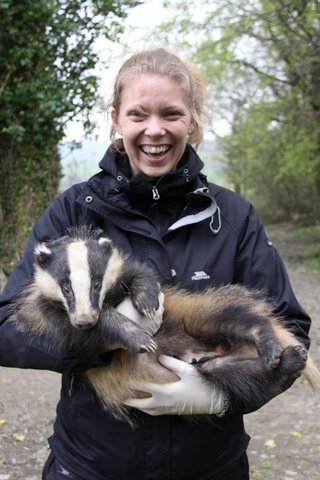
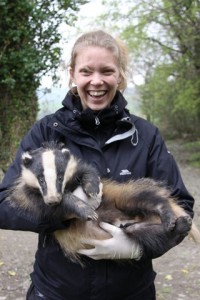
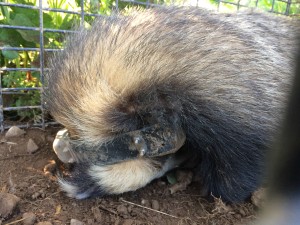
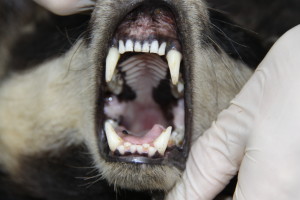
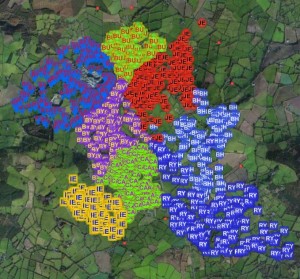
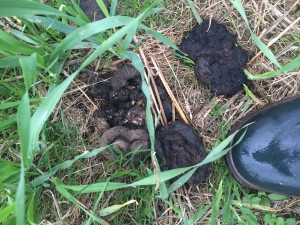
One Reply to “Badgery Fieldwork”